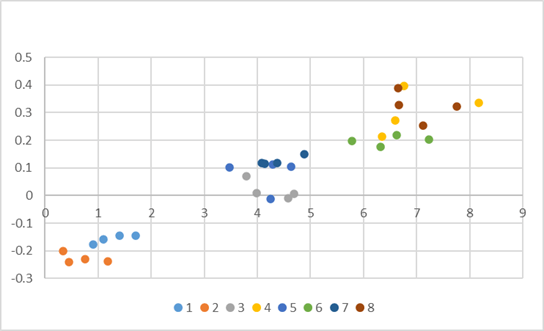Jarrod O. Miller, Extension Agronomist, jarrod@udel.edu, and Amy Shober, Extension Nutrient Management and Water Quality Specialist, ashober@udel.edu
For cover crops to provide maximum nitrogen or weed suppression for corn crops, building plant biomass is key. Rye is often pushed as a biomass builder, particularly when terminated later into the boot stages. However, over a three-year study sponsored by the Delaware NRCS we observed that lowering the rate of rye to 40 lbs/acre while adding 20 lbs of a legume (crimson clover or vetch) could also provide good biomass.
To achieve weed suppression, cover crop biomass (weights) of 4-8 Mg/hectare (1.8 to 3.5 tons/acre) are typically necessary. In our study, mixing in a legume improved the changes of reach 1.8 tons of biomass per acre for mid-April termination. This was particularly true in the spring of 2020, where a much warmer winter (Figure 1) allowed for greater growth in the month of February to March. To reach values closer to 3.5 tons, cover crop burndown would have to occur around May 1st. In this study our May 1st planting was done into a living cover crop (planting green), and could reduce yield by 5-10 bushels, probably due to stand loss.
So, as you are choosing your cover crops for fall planting, you can consider building additional nitrogen and weed suppression into your corn rotation by mixing rye with clover or vetch.

Figure 1. Estimated cover crop heights (meters) by drone vs biomass (Mg ha-1). Odd numbered points are early termination (mid-April) while even numbered are by May1st. They are no-cover (1,2), rye (3,4), rye/vetch (5,6), and rye/clover (7,8). Cover crop growth in 2020 was abnormally higher due to a warmer winter.
